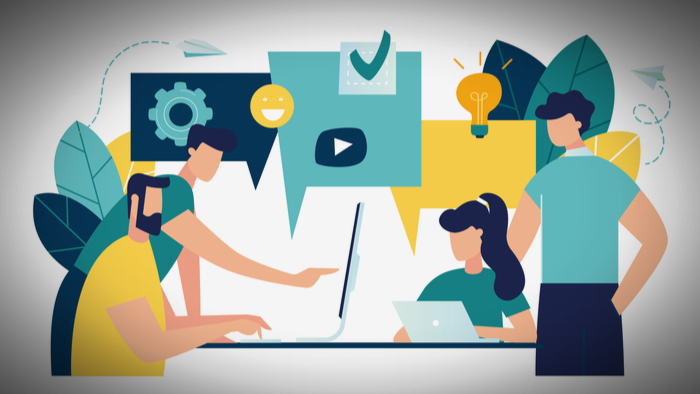Reimagining Community: Innovative Ways to Build and Strengthen Connections

In an increasingly digital and fast-paced world, the concept of community has evolved significantly. Traditional notions of community, centered around geographical proximity and face-to-face interactions, are being supplemented and, in some cases, replaced by new forms of connection. Whether through online platforms, innovative public spaces, or creative initiatives, reimagining community is essential for fostering a sense of belonging and collective growth. In this article, we will explore innovative ways to build and strengthen connections in today’s society.
The Digital Community
Social Media Platforms
Social media has revolutionized the way we connect, making it possible to form communities across the globe. Platforms like Facebook, Twitter, and Instagram allow people to join groups and engage with others who share similar interests, regardless of their location. These virtual communities can provide support, share knowledge, and create a sense of belonging.
Online Forums and Discussion Boards
Websites like Reddit and Quora host diverse online communities where people can ask questions, share experiences, and offer advice. These forums are particularly valuable for niche interests and topics, providing a space for individuals to connect and engage in meaningful discussions.
Virtual Events and Webinars
With the rise of remote work and online learning, virtual events and webinars have become popular ways to connect. These events allow participants to engage with experts, network with peers, and participate in discussions from the comfort of their own homes. Platforms like Zoom and Microsoft Teams facilitate these virtual gatherings, making them accessible to a wide audience.
Innovative Public Spaces
Community Gardens
Community gardens are physical spaces where people can come together to grow plants, share gardening tips, and enjoy nature. These gardens not only provide a source of fresh produce but also create opportunities for social interaction and community building. They can be found in urban areas, schools, and neighborhoods, offering a green oasis for residents to gather and connect.
Co-Working Spaces
Co-working spaces are designed to foster collaboration and innovation. These shared workspaces bring together freelancers, entrepreneurs, and remote workers, providing them with a professional environment and the chance to network. By offering communal areas, workshops, and social events, co-working spaces help build a sense of community among individuals who might otherwise work in isolation.
Pop-Up Events
Pop-up events are temporary gatherings that can be used to bring people together around a common interest. 카지노커뮤니티 These events can take many forms, from food festivals and art installations to fitness classes and music performances. By creating unique and memorable experiences, pop-up events encourage people to connect and engage with their local community.
Creative Initiatives
Community Art Projects
Art has the power to bring people together and inspire change. Community art projects, such as murals, sculptures, and public installations, invite residents to participate in the creative process. These projects can reflect the values and stories of a community, fostering pride and a sense of ownership among participants.
Time Banks
Time banks are innovative systems where people exchange services and skills without using money. Members of a time bank earn credits by providing services, such as tutoring, gardening, or cooking, which they can then spend to receive services from others. This model promotes reciprocity and strengthens social ties by encouraging people to help one another.
Skill-Sharing Workshops
Skill-sharing workshops offer a platform for community members to teach and learn from each other. These workshops can cover a wide range of topics, from cooking and crafting to coding and financial planning. By sharing their expertise, participants not only acquire new skills but also build connections with others who have similar interests.
Leveraging Technology for Community Building
Mobile Apps
There are numerous mobile apps designed to help people connect and build communities. Apps like Nextdoor focus on neighborhood connections, allowing residents to share news, organize events, and offer assistance. Meetup is another popular app that helps people find and join groups based on their interests, facilitating in-person gatherings and fostering community spirit.
Crowdsourcing Platforms
Crowdsourcing platforms, such as Kickstarter and GoFundMe, enable individuals to rally support for projects and causes. These platforms allow community members to contribute financially or through volunteer efforts, helping to bring ideas to life and create a sense of collective achievement.
Virtual Reality (VR) Communities
Virtual reality technology is opening up new possibilities for community building. VR platforms like AltspaceVR and VRChat create immersive environments where users can interact with each other in real-time. These virtual communities provide a sense of presence and engagement that goes beyond traditional online interactions, offering new ways for people to connect and collaborate.
Building Inclusive Communities
Diversity and Inclusion Initiatives
Creating inclusive communities requires intentional efforts to embrace diversity and ensure that all members feel valued and respected. This can be achieved through initiatives that promote cultural awareness, provide support for marginalized groups, and encourage open dialogue. By fostering an environment of inclusivity, communities can benefit from a wider range of perspectives and experiences.
Accessibility Improvements
Ensuring that community spaces and events are accessible to everyone is crucial for building strong connections. This includes providing accommodations for individuals with disabilities, offering multilingual resources, and creating family-friendly environments. By removing barriers to participation, communities can become more welcoming and inclusive.
Intergenerational Programs
Intergenerational programs bring together people of different ages to share experiences, learn from each other, and build meaningful relationships. These programs can take the form of mentoring, storytelling sessions, or collaborative projects. By connecting different generations, communities can preserve traditions, foster mutual respect, and strengthen social bonds.
Conclusion
Reimagining community in the modern world involves embracing both digital and physical spaces, leveraging technology, and fostering inclusivity. By exploring innovative ways to build and strengthen connections, we can create vibrant, supportive, and resilient communities. Whether through online platforms, creative initiatives, or inclusive practices, the power of community remains a vital force for collective growth and well-being.




